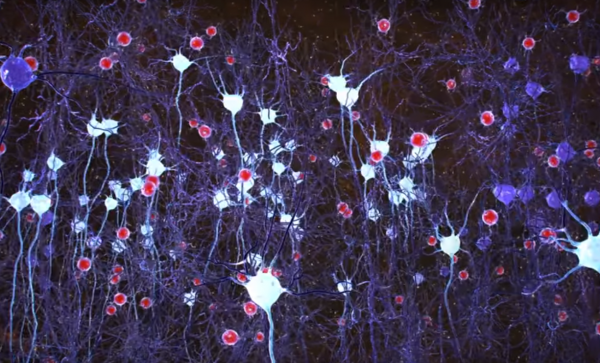Flickering light could hold the key to tackling Alzheimer’s, a new study suggests.
Early work involving mice has shown that stimulating brain waves with light can reverse the build-up of a toxic brain molecule thought to be a root cause of the disease.
What is the basis of the research?
It was already known that people with Alzheimer’s are less likely to display brain waves – synchronised firing of neurons – in the “gamma” frequency range, between 25 to 80 hertz (cycles per second). Gamma activity is believed to contribute to normal brain functions such as attention, perception and memory.
Where does the light come in?

Light can be used to “tune” neuron activity. In their initial experiments, Massachusetts Institute of Technology (MIT) scientists genetically modified brain cells in mice with Alzheimer’s to make them responsive to light from fibre-optic implants.
What did this experiment show?
Light stimulation generated gamma activity which in turn led to a 50% reduction in levels of toxic beta-amyloid peptide in the hippocampus region of the brain. The hippocampus is the brain’s main memory centre and the region most affected by Alzheimer’s.
How does this relate to “flickering light” treatment?

In the next stage of the research, scientists flashed LED lights in the eyes of Alzheimer’s-affected mice. At a specific frequency of 40 hertz, this again led to a major reduction in beta-amyloid, but in the brain’s visual cortex rather than the hippocampus.
The treatment also curbed the build-up of tau protein “tangles” within brain cells, a second hallmark of Alzheimer’s that may follow on from the accumulation of beta-amyloid.
What do scientists think is happening?
Somehow gamma activity in the brain not only protects against beta-amyloid build-up but also stimulates immune cells to clear away the toxic deposits.
Why are these results so significant?

Currently, there are no available drugs that can halt or even slow Alzheimer’s progression. If gamma brain waves can be generated in Alzheimer’s patients, either by light or some other means, there is a chance that the disease might not only be halted but reversed.









